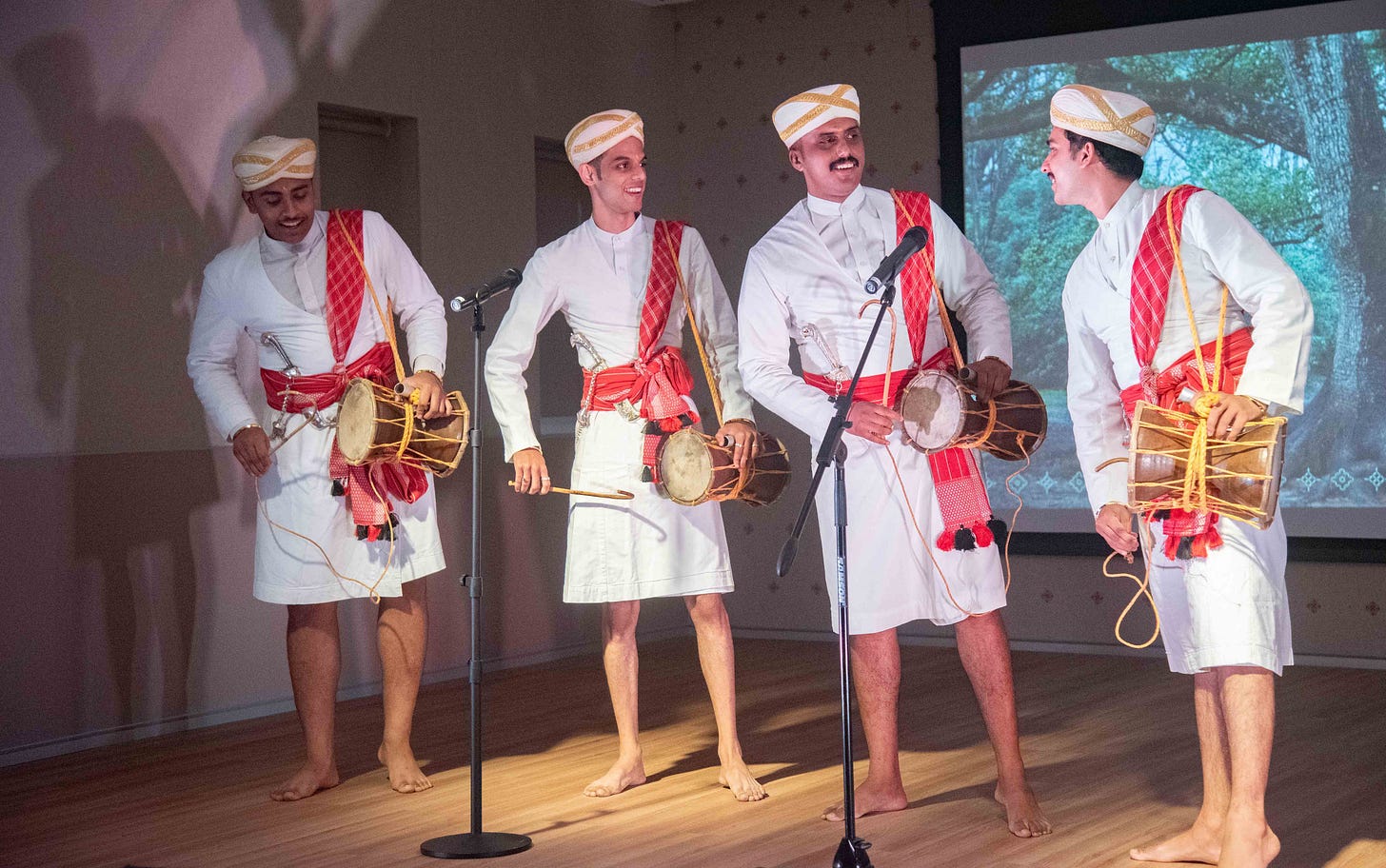Paajé (Language)
Aalia Chondamma Mevada's reflections on what it means to speak Kodava Thakk, one of India’s smallest Dravidian languages, listed by UNESCO as vulnerable.
By Aalia Chondamma Mevada
I remember once approaching a lady at a bookstore because I heard her speak Kodava Thakk. I was new to Bengaluru at the time, browsing through titles, when the familiar syllables and tone caught my ear and refused to let go. I hadn’t been home for a while, and to hear the language out of the blue meant that I almost tripped over myself trying to reach the woman, a sudden reminder of where I come from in the midst of the grey walls of the city.
The language is, for me at least, a lived reality when I’m at home and a symbol of who I am when I’m not. The familiar words taste as ordinary and comforting as the ottis* and guavas on my tongue when I speak them, to my grandmother and to my younger brothers.
Songs in Kodava thakk, with their rhythm and routine, sound like the steady rush of a stream, the gentle breath of wind against the tall trees. I remember also, sitting on the jackfruit wood of the aimara* during manepaado*, that old tradition of singing songs after Puthari*, the sun spilling over the treetops that morning as the grandfathers sang the names of all who came before and all who occupy this realm now. I remember sitting there, on the steps of my cousin’s home when the funeral song was sung, a slow realisation dawning upon me as I listened to the lyrics - even in death, we honour this land, even in death, we do not forget.
This language holds history, a beautiful, bloody and nuanced one. It is both a warrior’s cry and a poet’s dream. After all, was it not Haradasa Appacha Kavi who penned praise for the land, and passed down that old oral tradition of teasing wit in his stories? To keep a culture alive and to entrust it to the child who snores softly - is that not the point of it all? And to construct a language so simple yet so intricately connected to the very land and people it comes from, to the point where simply speaking it takes you back to those rolling meadows and proud mountains - to keep it alive - is that not the point of it all too? And to speak it! To speak it is to represent it outside of my home, is to assert my identity, my history, my culture. A way to say, “We endure! We live! We were here, we will be!”
Watch the latest episode of Noorakke Nooru Karnataka: Is Kodava Culture Under Threat? | Coorg’s Untold Legacy
And I have faith enough that we will. Such a tiny force we are, but a force nonetheless, a force that speaks the language of a river mother, of the mountains and forests and the very landscape it is shaped by. I have faith enough that though my generation needs to pause and ask for context and meaning, we learn. We take what we can from those who came before and keep it alive, a glowing ember forever treasured. The ancestors would be proud, I think.
They’d smile and probably sing in that lilting tune: “Baalo Baalo Engada!” Prosper, O friend!
Otti - a flatbread (sort of) that is a staple in Kodava cuisine
Aimara - Seating area in the veranda, often large and made of jackfruit wood
Manepaado - Literally translates to House Singing, a tradition where the baalo paat (a folk song) is sung
Puthari - Kodava harvest festival
Haradasa Appacha Kavi - Adikavi or the first poet of Kodavas.
Aalia Chondamma Mevada is a small-town girl from Kodagu with a love for literature, nature, history, and culture. The youngest PM YUVA Author, her book The Lost Heroes of Kodagu chronicles the district’s unsung freedom fighters.



